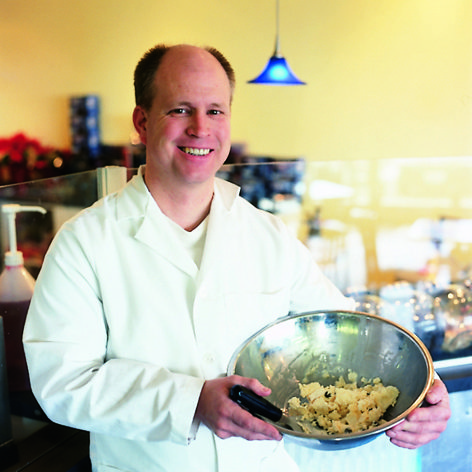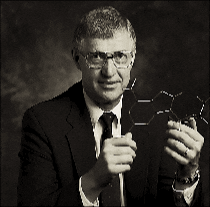Imagine 16 Americans, as many duffels, and 32 boxes of sound equipment in a full-speed caravan across the airy Stazione Centrale in downtown Milan, Italy. Some trekkers, the older ones, are pushing carts piled high with boxes; others lug bags behind them. “We had three or four minutes to run across the entire train station,” says Mari Goodman. She; her husband, Paul; and the rest of the Goodmans–Utah’s “singing family”–toured under a tight schedule. “We were still throwing boxes onto the train as it was pulling out,” Paul says, laughing. “It was crazy.”
Safely aboard the Rome-bound train, the Goodmans continued their tour of Europe. They have braved train stations and airports from New York to the Czech Republic in order to present their family-centered musical repertoire. “Our goal is to help strengthen families and build family values,” says Paul, the third of the 12 Goodman children.
After returning from a mission at Rostov-na-Donu, in southern Russia, Goodman performed with his family and studied chemical engineering, a subject that has interested him since high school. It was in BYU lecture halls that he crossed paths with Mari Norman, also a student of chemical engineering. They were married in April 1997, and he graduated in August 1999.
Nowadays, with his time divided between graduate work and his own family–Mari and a year-old daughter, Christina–there’s not much room to travel the world bolstering family values.
A PhD student in chemical engineering, Goodman, 24, is currently chipping away at his dissertation research project. His investigation into blood-biomaterial compatibility is shedding new light on a field that, according toBYU chemical engineering professor Kenneth A. Solen, has seen only limited progress in the last 30 years.
The proliferation of artificial hearts and heart valves, heart surgery, blood vessel repair, and kidney dialysis has brought an increasing–and largely unmet–demand for material that does not react harmfully with blood.
“The material the blood normally sees is the inner layer of the blood vessel, called the endothelium, and the endothelium is the only material we know that’s compatible with blood,” explains Solen, who heads the Chemical Engineering Department.
When foreign material, such as the Dacron or Teflon used in vascular grafts or the polyurethane used for artificial hearts, comes into contact with blood, platelets sometimes pile up on it, creating a “thrombus.” “It’s like a precursor to a clot,” Goodman says. When a thrombus breaks off from the material, or “embolizes,” it can lodge in capillaries or organs downstream, causing tissue damage or organ failure.
Goodman’s research involves using a technique he developed himself in order to observe thrombi developing and breaking off. “I flow blood through a series of expansions and contractions in tubing to create specific flow conditions,” he says. “Then I observe the thrombi under a microscope.”
He hopes these experiments will lead to a better understanding of the phenomenon, which in turn could facilitate the evaluation of biomaterials and anti-platelet drugs and aid in the design of artificial organs. Eventually Goodman will use his data to create a computer model that predicts where and when thrombi might build up in artificial organs or other blood-contacting devices. “In the past,” he says, “there hasn’t been a large-scale model. There’s not enough data available because researchers haven’t been able to watch thrombi grow and break off.”
Goodman’s interest in blood flow and biomaterials compatibility was first sparked more than three years ago when, as an undergraduate, he started working with Solen. His mentor noticed his innovative mind early on. “Once in a great while–and Paul is one of these ‘once-in-a-great-while’ students–you’ll have a student who has the confidence and intellect to get into the research and say, ‘You know, this procedure could be improved’,” Solen says. “He’d make changes and test them; then he’d come back to the research group and say, ‘I did some experiments, I’ve made an improvement, and here’s proof that it really is a better way.’ And Paul was doing that as a junior. He’s got that kind of initiative and confidence.”
But Goodman plays himself down. “I don’t know that it’s anything special,” he says. “I just make sure that I keep busy and keep trying to find better ways of doing things. I’m still figuring it out.”
In true Goodman spirit, he recognizes that “figuring it out” sometimes needs to be left in the lab. “I spend a lot of time with Christina,” he says. “She loves playing out in the leaves and on the grass, so we go on a lot of walks. We spend as much time as possible together as a family.” Paul Goodman, who once crossed oceans to sing in support of the world’s families, now stays in Provo and finds time for his own.










